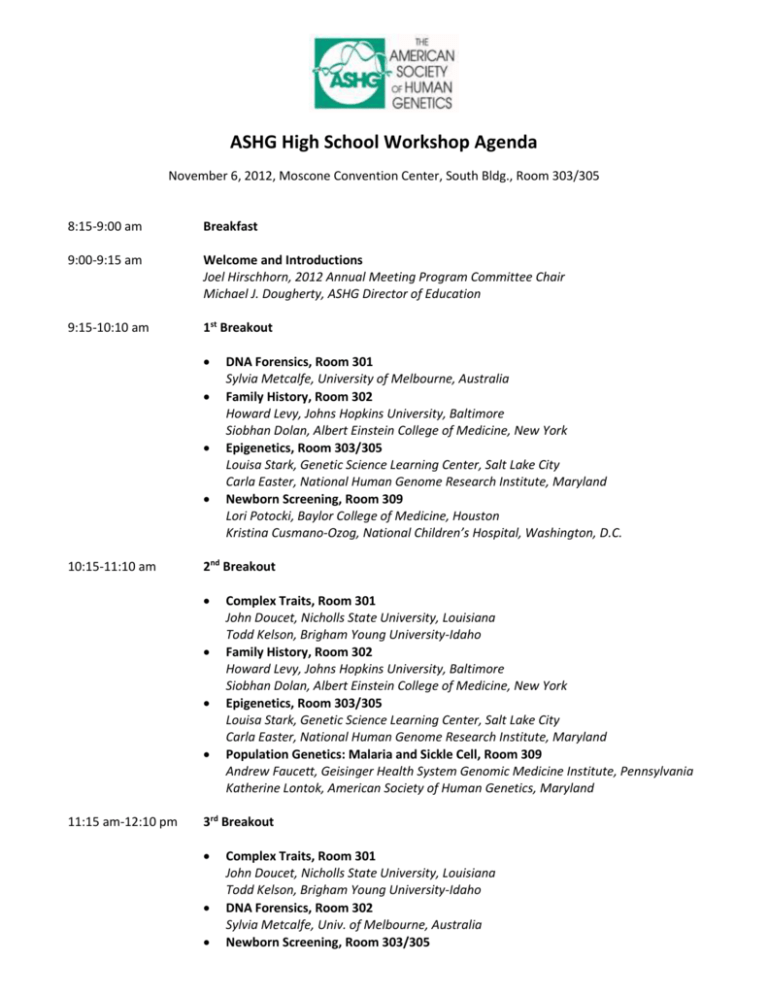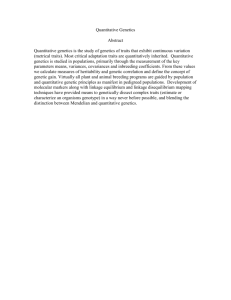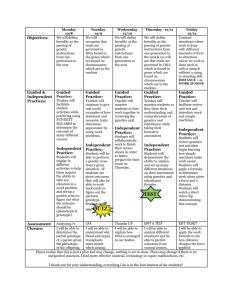High school - American Society of Human Genetics
advertisement

ASHG High School Workshop Agenda November 6, 2012, Moscone Convention Center, South Bldg., Room 303/305 8:15-9:00 am Breakfast 9:00-9:15 am Welcome and Introductions Joel Hirschhorn, 2012 Annual Meeting Program Committee Chair Michael J. Dougherty, ASHG Director of Education 9:15-10:10 am 1st Breakout 10:15-11:10 am 2nd Breakout 11:15 am-12:10 pm DNA Forensics, Room 301 Sylvia Metcalfe, University of Melbourne, Australia Family History, Room 302 Howard Levy, Johns Hopkins University, Baltimore Siobhan Dolan, Albert Einstein College of Medicine, New York Epigenetics, Room 303/305 Louisa Stark, Genetic Science Learning Center, Salt Lake City Carla Easter, National Human Genome Research Institute, Maryland Newborn Screening, Room 309 Lori Potocki, Baylor College of Medicine, Houston Kristina Cusmano-Ozog, National Children’s Hospital, Washington, D.C. Complex Traits, Room 301 John Doucet, Nicholls State University, Louisiana Todd Kelson, Brigham Young University-Idaho Family History, Room 302 Howard Levy, Johns Hopkins University, Baltimore Siobhan Dolan, Albert Einstein College of Medicine, New York Epigenetics, Room 303/305 Louisa Stark, Genetic Science Learning Center, Salt Lake City Carla Easter, National Human Genome Research Institute, Maryland Population Genetics: Malaria and Sickle Cell, Room 309 Andrew Faucett, Geisinger Health System Genomic Medicine Institute, Pennsylvania Katherine Lontok, American Society of Human Genetics, Maryland 3rd Breakout Complex Traits, Room 301 John Doucet, Nicholls State University, Louisiana Todd Kelson, Brigham Young University-Idaho DNA Forensics, Room 302 Sylvia Metcalfe, Univ. of Melbourne, Australia Newborn Screening, Room 303/305 Lori Potocki, Baylor College of Medicine, Houston Kristina Cusmano-Ozog, National Children’s Hospital, Washington, D.C. Population Genetics: Malaria and Sickle Cell, Room 309 Andrew Faucett, Geisinger Health System Genomic Medicine Institute, Pennsylvania 12:15-12:50 pm Lunch 12:55-1:45 pm 4th Breakout 1:50-2:30 pm Complex Traits, Room 301 John Doucet, Nicholls State University, Louisiana Todd Kelson, Brigham Young University-Idaho Family History, Room 302 Howard Levy, Johns Hopkins University, Baltimore Siobhan Dolan, Albert Einstein College of Medicine, New York Newborn Screening, Room 303/305 Lori Potocki, Baylor College of Medicine, Houston Kristina Cusmano-Ozog, National Children’s Hospital, Washington, D.C. Epigenetics, Room 309 Louisa Stark, Genetic Science Learning Center, Salt Lake City Carla Easter, National Human Genome Research Institute, Maryland Plenary Session The Spirit of Difference Rick Guidotti, Positive Exposure, New York Breakout Session Descriptions Basic - These sessions will be appropriate for students at any level of genetics knowledge. Complex Traits Widow’s peaks, tongue rolling, and earlobe attachment are familiar examples of genetic traits, but even these “simple” Mendelian traits may have more complex inheritance than first realized. If that’s the case, where does that leave our understanding of quantitative traits, such as height, intelligence, and cholesterol level? In this session, students will explore complex human traits and how modern genomics is helping us understand their genetic and environmental causes. DNA Forensics Most members of the same species are more genetically alike than different, yet only identical twins share exactly the same DNA sequence. Find out how forensic detectives tease out slight differences in DNA sequence to identify individuals. Students will discover the power and pitfalls of DNA identification analysis as they work to identify paternity and solve a “who dunnit” mystery, using information from DNA profiles to piece together crucial evidence that may – or may not – “make their case”. Family History Did grandfather Joe have Alzheimer’s disease? If so, does that mean that I’m at risk of getting the disease too? In this session, students will explore the power of family history information. They will construct pedigrees, follow the inheritance of several different types of traits, and try to make predictions based on their evidence. Population Genetics: Malaria and Sickle Cell How do genes and the environment interact to shape populations? In this session, students will use a probability game to investigate the prevalence of individuals who are carriers for a genetic disease and how the carrier rate (percentage) is affected by infectious disease. Explore genetic and environmental interactions from the bird’s eye view of the gene pool and watch natural selection in action! Advanced - These sessions will assume more prior genetics knowledge by students. Epigenetics: The Interaction of Genes and Environment Can the amount of licking that a rat mother provides her pups really affect their response to stress as adults? Surprisingly, yes, and the explanation isn’t in their genes (at least not how you might think!). Rat nurturing behavior isn’t the only example of this fascinating phenomenon. In this session, students will learn how environmental factors can affect gene expression, traits, and inheritance. Newborn Screening Have you ever wondered how much physicians and geneticists can learn about us from the moment we are born? Newborns are routinely screened for a variety of dangerous and often preventable disorders that may be present at birth. Students will explore some of those traits, including the foods eaten by persons with certain metabolic disorders, and learn about the underlying genetics.








